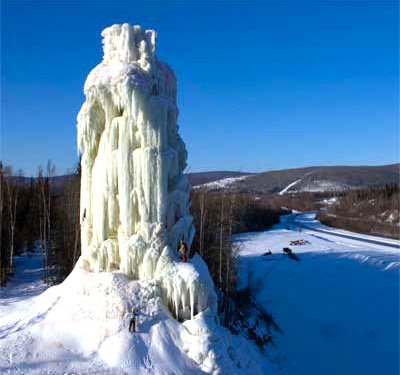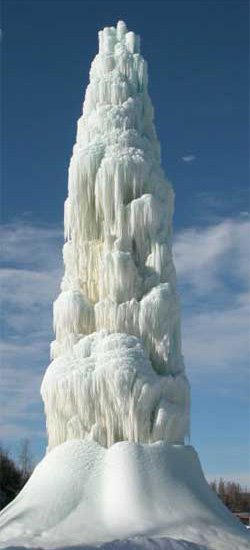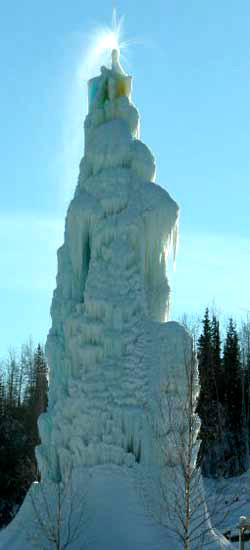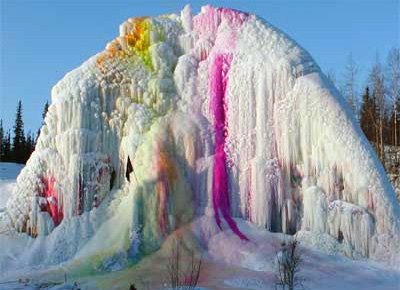
So Chicago lost its bid to host the 2016 Summer Olympic Games. Rather than brood about what might have been or haggle over alternatives to the massive dose of money the city would have been given to stimulate its limping finances, it should immediately develop a bid for the 2018 Winter Olympics. Since the deadline is less than two weeks away and the bid committee may still be suffering from their Copenhagen hangovers, we'll help them out.
Almost everything is going for Chicago. Its infrastructure is less than perfect for the huge Summer Olympics crowds, but would be more than able to handle the modest attendance at a Winter Olympics and would definitely be unmatched by the usual winter bid cities and their smaller scale public transportation systems. Its gargantuan hotel industry would easily surpass capacity requirements.
There will also be no need to build a hulking, temporary 80,000-seat stadium, as Soldier Field will be more than able to seat the smaller crowd at the Opening and Closing Ceremonies. And perhaps it can even host another event. At the 1994 Winter Olympics in Lillehammer, Norway, the venue for the ceremonies was also the same arena for ski jumping events. As the following photograph shows, this combination is possible at Soldier Field.

And as we re-imagined it a few months ago for a new century, this new prosthetic mountain analogue would be hinged, meaning it can be flipped up and down. Those traveling along Lake Shore Drive or boating on Lake Michigan would see the wavy profile of a half Eiffel Tower.
It's the technolicious descendant of the first Ferris wheel, built in 1893 for the World's Columbian Exposition in Chicago.

It's easy to re-render venues in the failed summer bid into venues for a winter bid. For instance, next door to Soldier Field is the cluster of convention halls where various sports such as gymnastics would have been held; its sprawling spaces would be converted to house figure skating, speed skating and curling competitions. The United Center — formerly proposed for basketball — would host ice hockey competitions; it already serves as the home of the city's professional hockey and basketball teams anyway.
Some of the large urban parks in the old bid will again be drafted into the new bid. At Millennium Park, medal ceremonies will take place against the backdrop of the greatest skyline in the world. One or two will be re-landscaped for freestyle skiing, snowboarding and sliding competitions. As for the serpentine race track used in bobsleigh, luge and skeleton, one is tempted to hire Frank Gehry to replicate his BP Pedestrian Bridge.
Since all the venues will be wholly situated inside a major global metropolis and not in some sequestered, exclusive mountain spa resorts hundreds of gas-guzzling miles away from the supposed host city, chances are that they will be heavily used after the games; maybe a subculture of urban snowboarders will clique together. Perhaps one of the better legacies of the games would be the popular adaptation of winter sports (some or all of which are seen as the domain of the privileged) by new socioeconomic and racial classes.
In any case, during the summer, these same installations will add interesting landforms to the parks. The slopping concave hollow of the half-pipe could be re-landscaped as the seating lawn for an outdoor theater. The sliding track, meanwhile, becomes a monumental piece of public sculpture-cum-skating park.

Of course, there is one major thing that's going against Chicago. It's not the availability of snow, since this is also a concern in many alpine areas. Climate change is evaporating glaciers everywhere, and natural snow cover grows increasingly tenuous.
Chicago's gritty landscape shouldn't be much of a handicap as well. It may seem that way at first, as it definitely doesn't embody a certain sort of nature — rustic mountains, pastoral evergreen forests, a lonely goatherd, etc. — which is presumably a prerequisite for certain venues. But have the more traditional Winter Olympic sites not been over the years transformed into high-tech event landscapes, carefully managed and augmented with artificial snow and heavy plows that sculpt the slopes to a pre-programmed set of topographical parameters?
The one glaring negative is the city's glacial-flattened topography. Where does one hold the alpine events?
They'll be held in an artificial mountain. Obviously.

But not that sort of tectonics, as this venue will have a more organic and geological veneer.



And its scale will need to be exponentially inflated. This is the Make No Little Plans for the 21st century.
If one is worried that no future host city will ever be able to architecturally outdo the Beijing Olympics (as if organizing and building the games once again in a free and democratic country with no ethnic cleansing being carried out along its periphery isn't enough to surpass it?), this Everest of the Prairie will surely top a fantasy list of the greatest Olympic venues.
How can the IOC mafia refuse this big, bold vision?

It's an Olmstedian park writ large, and it's going be sited in the heavy industrial Lake Calumet sector of the South Side. Unless the Lakefront is larger, this will be Chicago's largest public open space, something which this part of the city sorely needs. Moreover, it will provide the opportunity to finally clean up this Superfund site.

Embedded within this double twin of the Loop Skyline and Millennium Park are spaces for use by athletes, officials and spectators. One could also hallow out spaces for the media center and even a satellite Olympic Village. After the games, they'll be converted into community centers, offices and residences, even theaters and indoor rock climbing caverns, all sheathed by the largest green roof in the world. And the views will undoubtedly be spectacular. On the outside surface, meanwhile, parts of the mountain will be turned into a refuge for imported wildlife.
As for the cost, we'll get back to you.
Ski Delft


































